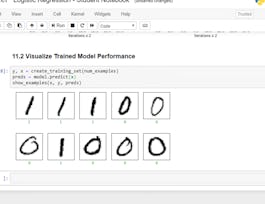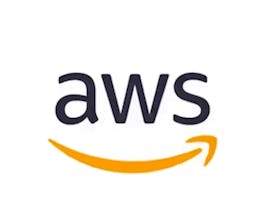The past 15 years have been exciting ones in plant biology. Hundreds of plant genomes have been sequenced, RNA-seq has enabled transcriptome-wide expression profiling, and a proliferation of "-seq"-based methods has permitted protein-protein and protein-DNA interactions to be determined cheaply and in a high-throughput manner. These data sets in turn allow us to generate hypotheses at the click of a mouse or tap of a finger.


Plant Bioinformatics Capstone
This course is part of Plant Bioinformatic Methods Specialization
Taught in English
Some content may not be translated

Instructor: Nicholas James Provart
4,177 already enrolled
Included with 
Course
(28 reviews)
Details to know

Add to your LinkedIn profile
3 quizzes
Course
(28 reviews)
See how employees at top companies are mastering in-demand skills

Build your subject-matter expertise
- Learn new concepts from industry experts
- Gain a foundational understanding of a subject or tool
- Develop job-relevant skills with hands-on projects
- Earn a shareable career certificate


Earn a career certificate
Add this credential to your LinkedIn profile, resume, or CV
Share it on social media and in your performance review

There are 5 modules in this course
In the Week 1 module, we are going to use an example gene of (mostly) unknown function from Arabidopsis, At3g20300, and see what online databases can tell us about that gene. Part A uses tools that we have explored in Plant Bioinformatics to gather information about the gene/gene product, such as its size, what its homologs are, phylogenetic relationship to other sequences, domain information, and subcellular localization. Part B explores gene expression databases to see where that gene is expressed. Often where and when a gene is expressed can give us clues as to its function.
What's included
2 readings1 quiz
Often the function of genes that are coexpressed with a gene of unknown function can give us hints about the function of that gene. Researchers are now often using coexpression analyses as “primary screens” to identify “new” genes in biological pathways (a few examples are described in Usadel et al., 2009). Another interesting facet is whether the promoters of these sets of coexpressed genes contain any common cis-regulatory motifs. In Part A, we’ll explore the genes that are coexpressed with At3g20300, and in Part B, we’ll look for common regulatory motifs.
What's included
2 readings1 quiz
Gene Ontology enrichment analysis for a set of coexpressed gene is often useful for figuring out what that group of genes is doing. By doing such analyses with a set of coexpressed genes can we infer a role for our gene of unknown function? We'll explore this aspect in Part A, along with investigating potential pathways the gene list is involved in. In Part B, we'll use other network tools to investigate additional linkages to other genes, above and beyond those suggested by coexpression. It is sometimes useful to investigate these too! Again, we'll be using At3g20300 as our example.
What's included
2 readings1 quiz
Now we will take the above analyses and synthesize the information from them into a draft lab report/essay describing the putative function of our gene of interest with unknown function. We'll draw on the literature to describe what is known about related genes, and propose some experiments to test our hypotheses about our gene's potential function.
What's included
2 readings1 peer review
Based on feedback from peer reviews, we'll polish our draft to submit a final report! The report should be around 13-15 pages long (double spaced) including figures, which should be included inline. The page count does not include Methods or References (see Example Essay for format).
What's included
1 peer review
Instructor

Offered by
Recommended if you're interested in Research Methods

Coursera Project Network

Coursera Project Network

University of Toronto

Amazon Web Services
Why people choose Coursera for their career




Learner reviews
Showing 3 of 28
28 reviews
- 5 stars
78.57%
- 4 stars
10.71%
- 3 stars
7.14%
- 2 stars
3.57%
- 1 star
0%

Open new doors with Coursera Plus
Unlimited access to 7,000+ world-class courses, hands-on projects, and job-ready certificate programs - all included in your subscription
Advance your career with an online degree
Earn a degree from world-class universities - 100% online
Join over 3,400 global companies that choose Coursera for Business
Upskill your employees to excel in the digital economy
Frequently asked questions
Access to lectures and assignments depends on your type of enrollment. If you take a course in audit mode, you will be able to see most course materials for free. To access graded assignments and to earn a Certificate, you will need to purchase the Certificate experience, during or after your audit. If you don't see the audit option:
The course may not offer an audit option. You can try a Free Trial instead, or apply for Financial Aid.
The course may offer 'Full Course, No Certificate' instead. This option lets you see all course materials, submit required assessments, and get a final grade. This also means that you will not be able to purchase a Certificate experience.
When you enroll in the course, you get access to all of the courses in the Specialization, and you earn a certificate when you complete the work. Your electronic Certificate will be added to your Accomplishments page - from there, you can print your Certificate or add it to your LinkedIn profile. If you only want to read and view the course content, you can audit the course for free.
If you subscribed, you get a 7-day free trial during which you can cancel at no penalty. After that, we don’t give refunds, but you can cancel your subscription at any time. See our full refund policy.

